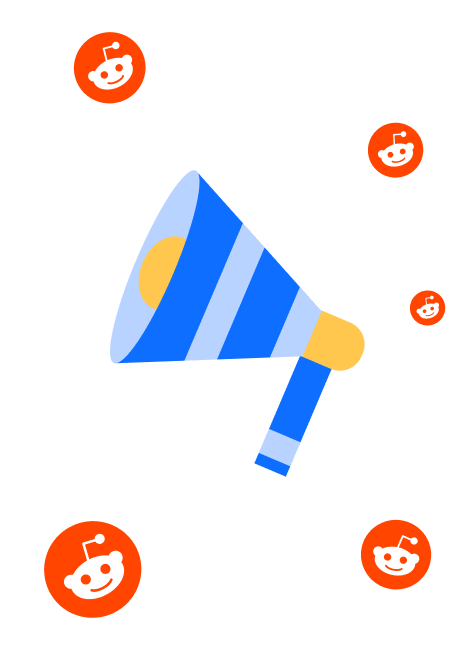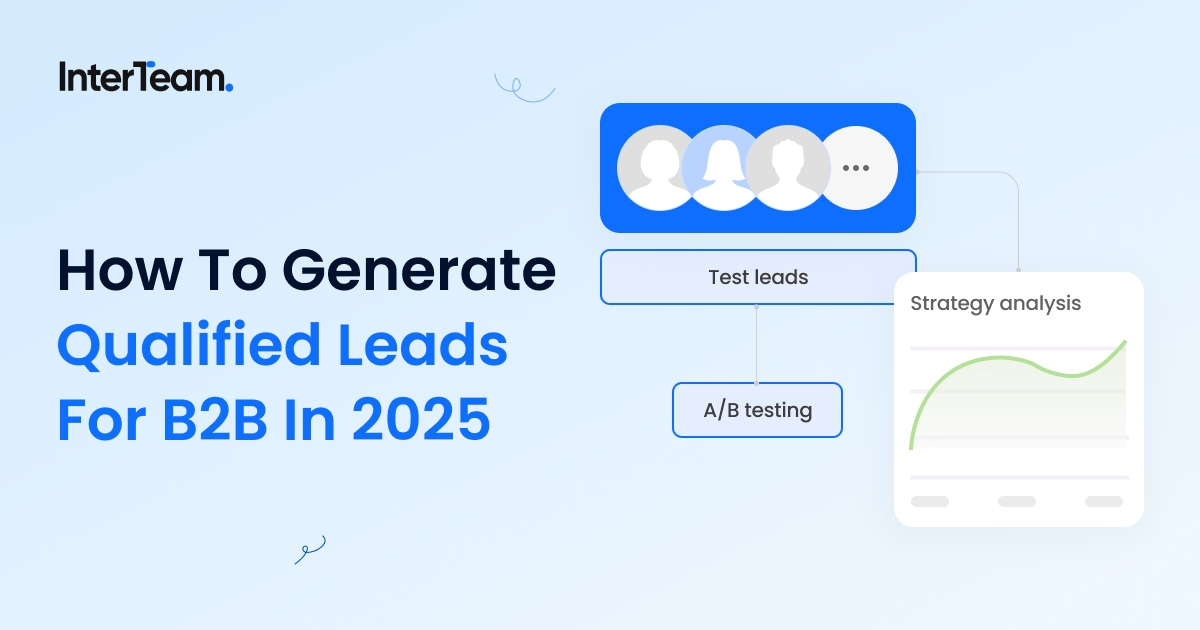How to Write Conversion Optimized Google Ads Copy
Crafting effective Google Ads copy is crucial. This is especially true for the B2B SaaS and services companies that we work with. Reaching decision-makers requires a personalized approach that addresses specific pain points and offers clear value. Additionally, long sales cycles, multiple stakeholders, and complex purchasing processes make it essential to create ad copy that resonates with your audiences.
By using the various Google Ads copy fields effectively, companies can target prospects while they research solutions, showcasing how their products or services solve key business challenges. Conversion-driven ad copy ensures that these companies stand out in a crowded market and drive meaningful engagement.
What Are the Google Ad Copy Fields?
Understanding the core ad elements—headlines, descriptions, and display paths—is essential for crafting high-performing ad copy in Google Ads. Each field plays a unique role in presenting your value proposition to potential customers.

Headlines
These are the most visible part of your ad and the first element that prospects will see. Google allows up to three headlines, which gives you the flexibility to test different messaging. For B2B services, it’s crucial that your headlines immediately convey your value. The first headline is the most important for grabbing attention, while the second and third can provide additional context or benefits.
Ad Specs
- Characters: max 30 per headline
- Variations: up to 15
Descriptions
Google Ads offers two description fields, each with 90 characters. This is your opportunity to expand on the value of your product or service. Use descriptions to clarify the problem you solve, emphasize benefits, and include a clear call to action (CTA) that drives the next step in the purchasing journey.
Ad Specs
- Characters: max 90 per description
- Variations: up to 4
Display Paths
These appear as part of the visible URL in your ad, offering an additional opportunity to include relevant keywords. Display paths should reinforce the message in your headlines and descriptions, making the ad more relevant and enticing for potential customers.
Ad Specs
- Characters: max 15 per path
- Paths: up to 2
Should You Pin Your Headlines and Descriptions?
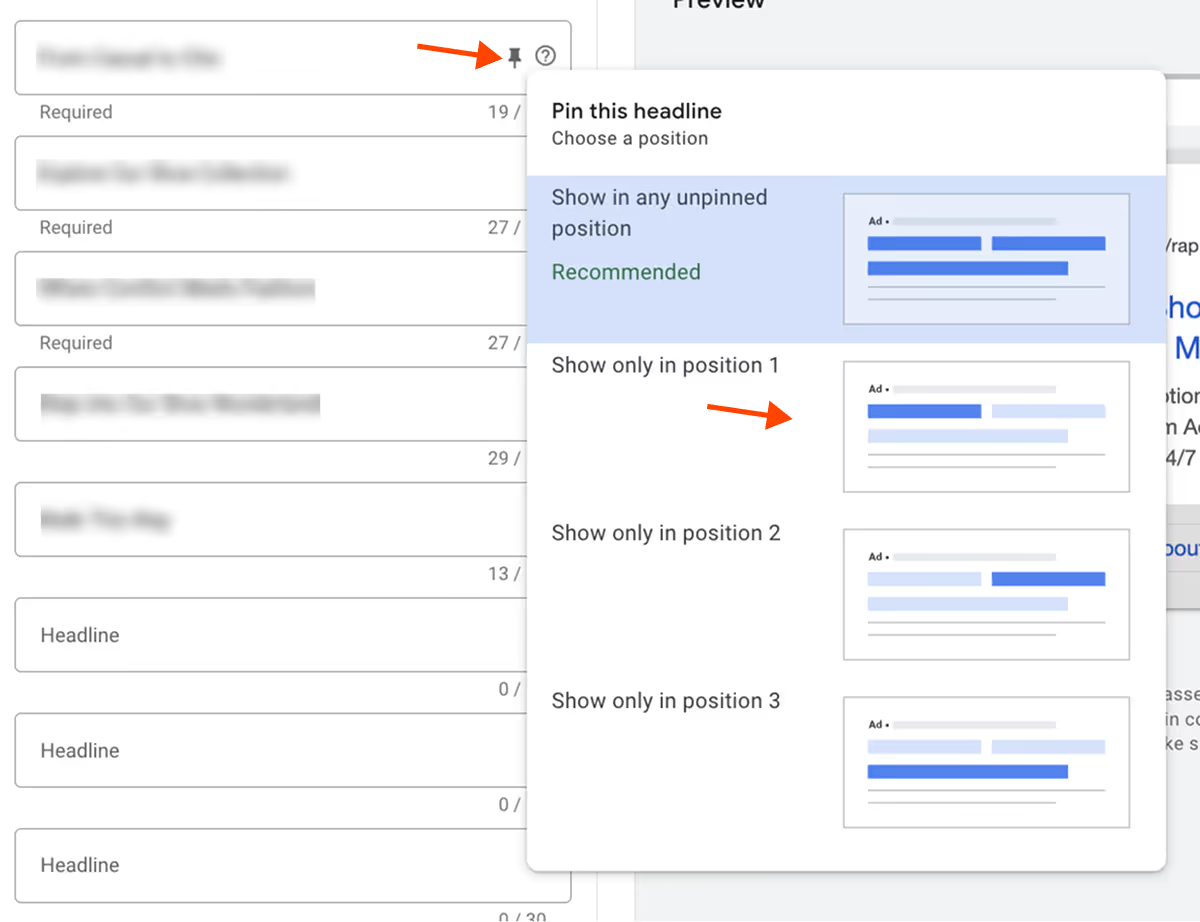
Pinning allows you to control which headlines and descriptions are shown in your ads, ensuring that critical messages are always visible. For B2B SaaS, where conveying your value proposition is essential, pinning can help ensure that your key messaging is never left out.
Google rotates between 1, 2, or 3 headlines based on available space. By pinning specific headlines or descriptions, you can guarantee that certain elements, like a keyword optimized headline are always displayed and that secondary features, like a call to action headline like "Sign Up For A Free Trial" never gets displayed alone.
For B2B companies, we recommend pinning your headlines and descriptions so that you have more control over testing value propositions, but be cautious not to over-pin, as this can reduce your ad strength and Google will not show your ad as often if your ad strength is rated as "Poor".
Google Ad Copy Guidelines for Each Headline Position
Creating effective Google ad copy starts with writing compelling headlines that capture attention and address your audience’s needs.
As mentioned earlier, Google Ads shows ad variations that use 1, 2, or 3 headlines depending on space and context and for this reason we recommend that you pin your headlines to ensure your ad copy remains strong across all possible search ad variations.
It's also important to note that sometimes Search ad headlines will be displayed in the description text, so keep that in mind while building copy as well.
Here's how to use each position for headlines and descriptions effectively position effectively for:
Headline 1: Keyword Optimization
Your first headline is the most crucial, as it’s likely to be seen most often. Make sure to include relevant, high-intent keywords that match your target audience’s search queries. For B2B services, using keywords like “enterprise solutions” or “professional services” will resonate with decision-makers who are actively seeking solutions.
Headlines 2 and 3: Test Messaging
Headlines 2 and 3 offer the flexibility to test different messages that complement your primary headline:
- Call to Action: Encourage immediate engagement with phrases like “Book a Free Consultation” or “Schedule Your Demo Today.”
- Pain Points: Address specific business challenges, such as “Reduce Operational Costs” or “Streamline Workflow.”
- Value Propositions: Highlight unique benefits like “Save 20% with Our Annual Plans” or “Guaranteed Results in 30 Days.”
- Social Proof: Include trust-building statements like “Trusted by 1,000+ Businesses” or “Rated #1 for Customer Satisfaction.”
Testing these different approaches helps optimize performance and discover what messaging drives conversions, but you have to make sure that you monitor the performance of each variation. As you can see below some subtle differences in the phrasing used in headlines can have a huge impact on CPCs and conversion rates:
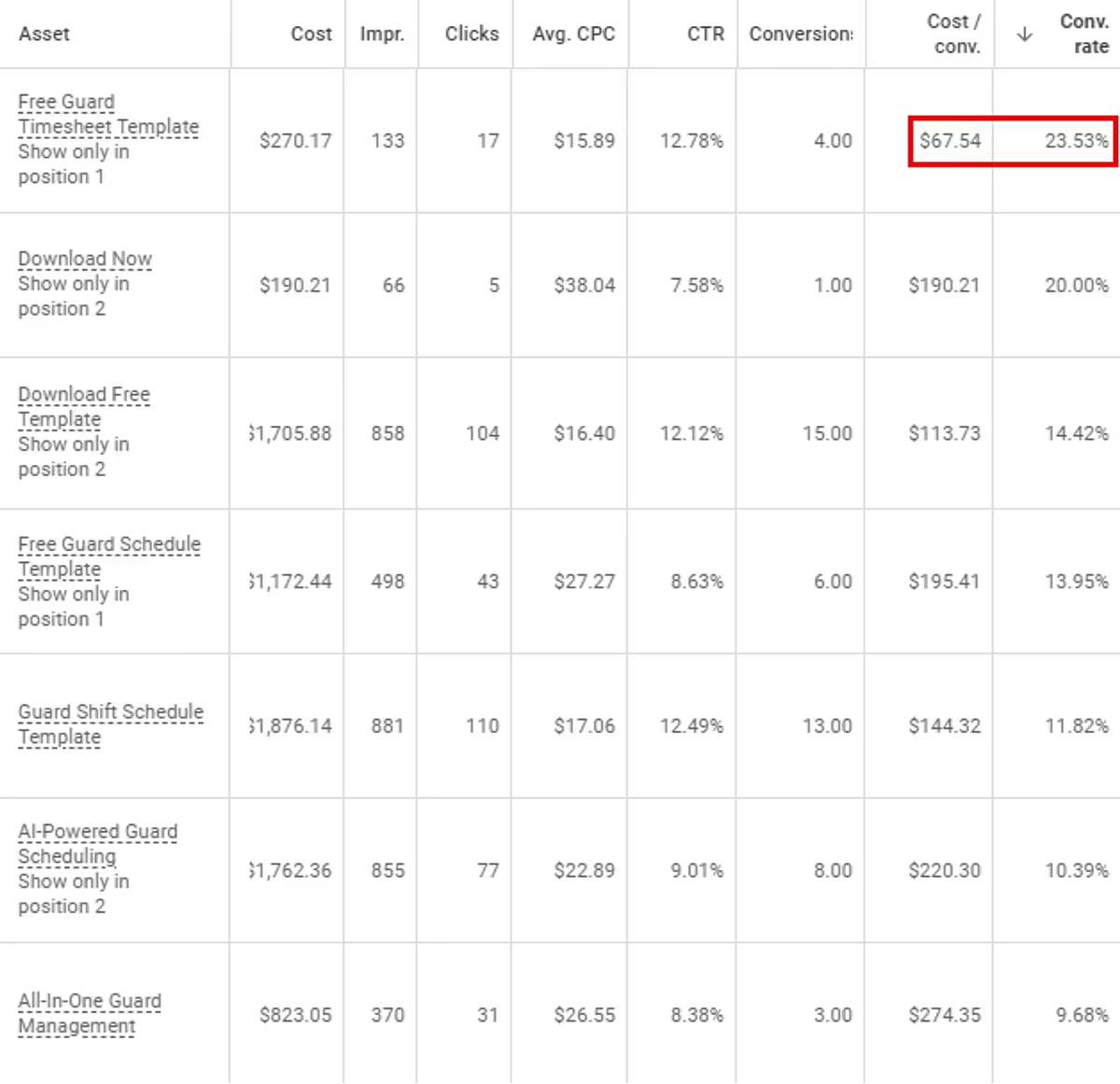
Google Ad Copy Guidelines for Each Description Position
The descriptions are where you flush out your brand's value propositions in more detail. There are only two positions for descriptions, but it's important to note that sometimes ads will display with only one description, so you have to keep that in mind while writing them.
Writing the 1st Description: Highlight Your Value Proposition
Your first description should focus on delivering a concise and compelling explanation of your value. In Google ad copy, addressing the pain points of decision-makers is key. Whether it’s a software solution or professional services, your description needs to clearly communicate how your offering will solve specific business challenges.
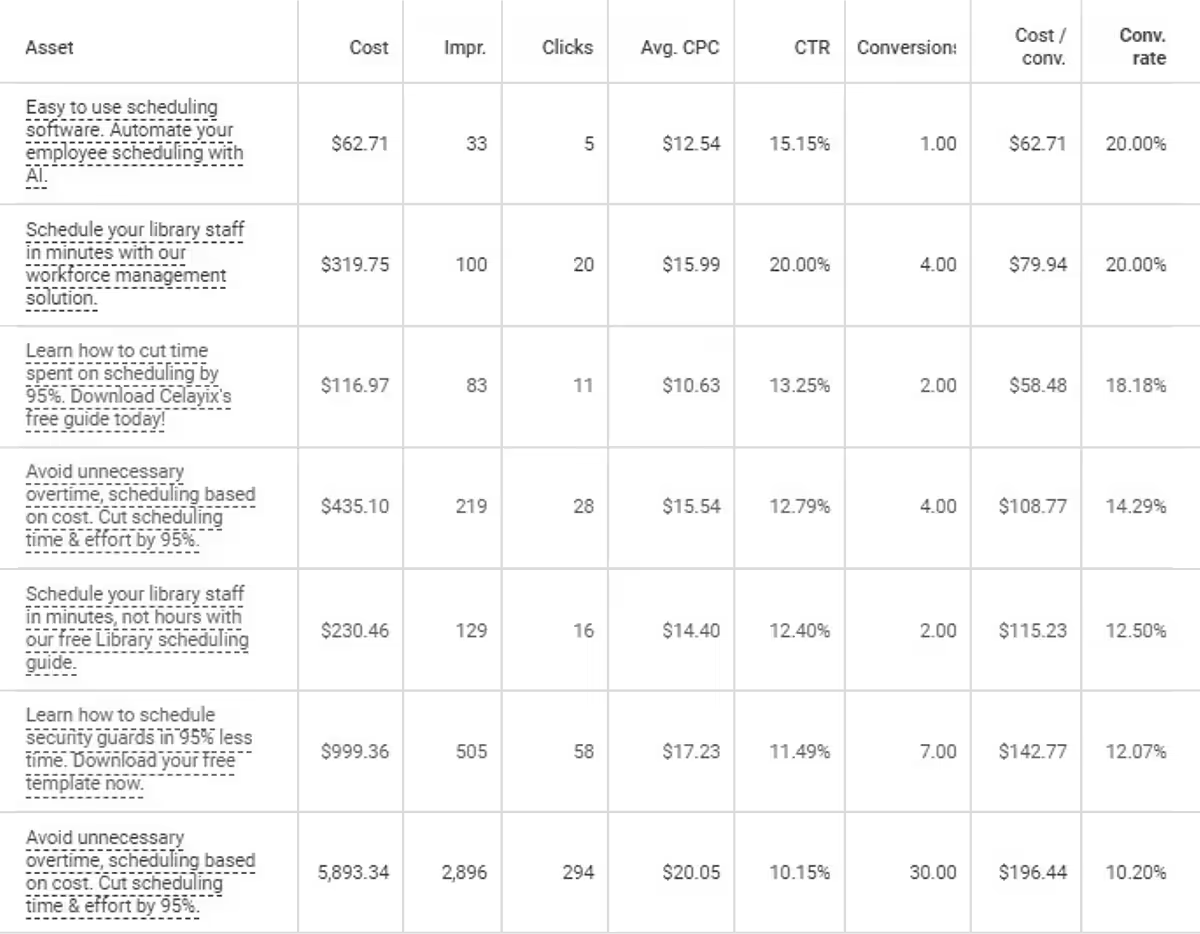
The 2nd Description: Crafting an Effective Call to Action (CTA)
The second description should push users toward action. A strong CTA, such as “Request a Free Consultation” or “Sign Up for a Demo Today,” creates a sense of urgency and clarity, driving potential clients to engage. Ensure that the CTA aligns with your business goals and speaks directly to the next step in your sales funnel.
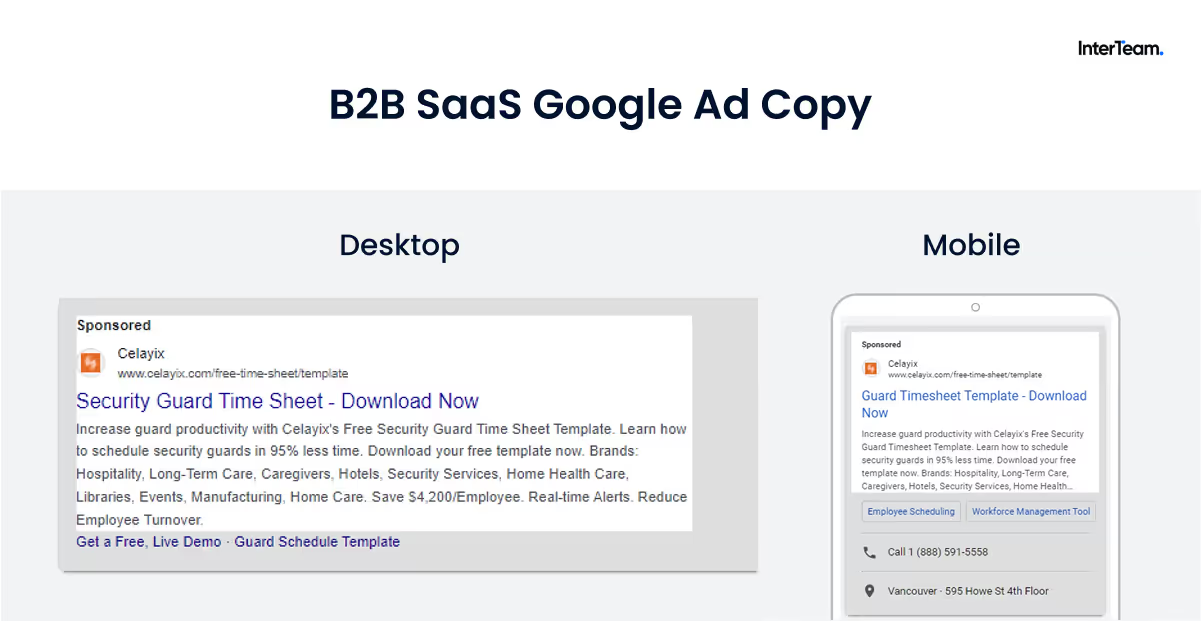
Measuring Performance of Headlines & Descriptions
Unfortunately, Google Ads doesn't give you data on the performance of individual ad copy elements like headlines and descriptions. However, as you saw earlier with headlines and again below with descriptions, we've developed a hack that allows you to see the performance of individual headlines and descriptions in Google Ads.
This is an absolute game changer for SaaS & B2B Google ad copy where understanding the performance of subtle variations in value propositions is so important.
In order to see this information, each headline and description that you use in your campaigns must also be added as a headline or description extension in the extensions section of Google Ads. Check out our YouTube video below for a complete walkthrough of how to add headlines and description extensions in Google Ads.
Utilizing Google Ad Extensions for B2B SaaS and Services
Ad extensions are additional copy features that to your enhance your ads by providing additional information that can influence user actions, like highlighting value propositions and features or adding additional calls to actions. In the next section, we'll be outlining our approach to Here’s how to use them effectively for B2B SaaS and services:
Logo and Business Name Extensions
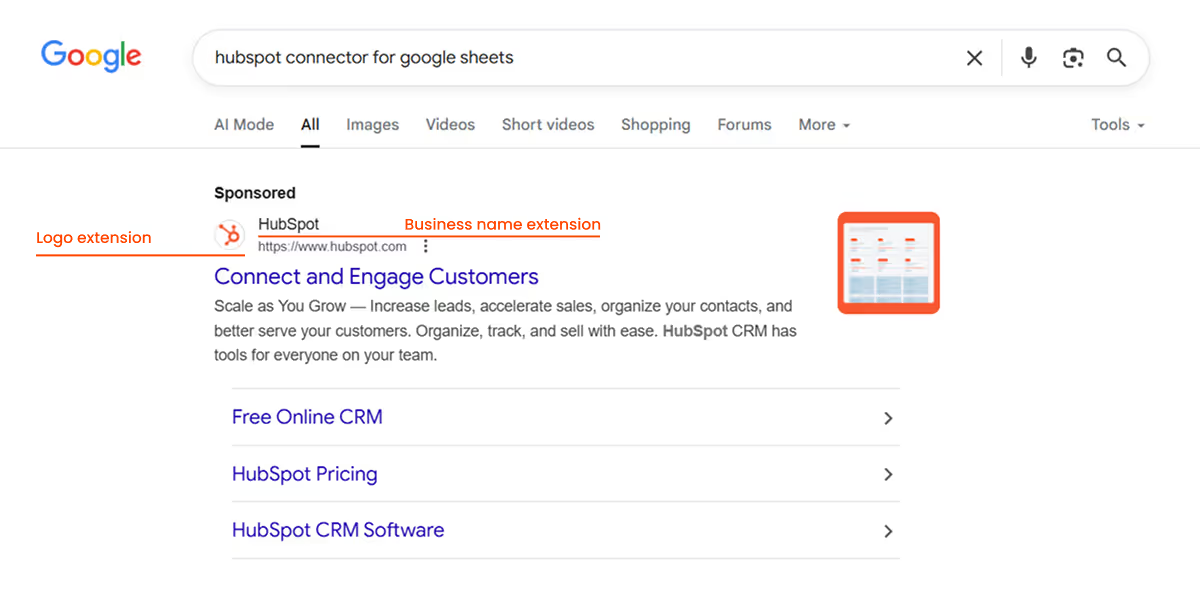
Logo and Business Name extensions allow you to reinforce your brand’s identity by including a logo next to your ads and a business name. This increases recognition and adds credibility, helping you build trust with potential customers. It also helps your ads stand out if other advertisers have not added the Logo or Business Name extensions.
Note: Business name should match the name of organization in business verification documents and the name should be in the business's domain
Ad Specs
- Logo Size: 1:1 square, min 128×128 px (recommended 1200×1200 px)
- Logo File Size: max 5 MB
- Logos: 1 allowed
- Business Name: up to 25 characters, 1 variation
Sitelink Extensions

Sitelink extensions allow you to include multiple links within your ad, directing users to specific pages focused on calls to action, product pages, case studies, testimonials, or pricing. These are valuable for B2B businesses, as they provide multiple entry points to your website, increasing engagement.
Example: A SaaS provider could include sitelinks like “Pricing Plans,” “Customer Testimonials,” and “Free Demo,” each linking to a relevant page to maximize user interaction.
Ad Specs
- Link Text: up to 25 characters
- Description Lines: up to 2, 35 characters each
- Sitelinks: up to 20
For a step-by-step walkthrough, check out our founder Cole Furrh’s video tutorial on How to Create Google Ads Sitelink Extensions.
Callout Extensions
Callout extensions highlight specific features or benefits in short phrases. B2B SaaS companies often use callouts to showcase unique selling points such as “No Setup Fees,” “24/7 Support,” or “Customizable Solutions", but they can also be used to highlight value propositions, pain points and calls to action, similar to headline 2 or 3s. These snippets reinforce the ad’s message and draw attention to critical value points.
Example: A B2B service provider might include callouts like “Trusted by Fortune 500” and “Free Consultation” to increase credibility and draw user interest.
Ad Specs
- Characters: max 25 per callout
- Callouts: up to 20
Structured Snippet Extensions

Structured snippets allow you to highlight key product categories or service offerings. For instance, a B2B SaaS company might use snippets to list features like “Cloud Storage, Data Security, API Integration,” while a services company might highlight offerings such as “Consulting, Training, Implementation.”
Example: An IT consulting firm might list “Solutions Offered” with snippets like “Cybersecurity, Network Management, Cloud Services.”
Ad Specs
- Header: chosen from Google’s predefined list (e.g., Services, Features)
- Values: 3–10, up to 25 characters each
For a step-by-step walkthrough, check out our founder Cole Furrh’s video tutorial on How to Create Google Ads Structured Snippet Extensions.
Promo Extensions

Promo extensions advertise discounts or special offers, which can create urgency. For B2B services, we typically use promo extensions work well to promote free trials, discounted subscription rates, or time-limited consultation offers.
One tricky thing about promo extensions is you have to set a percentage discount in order for your ads to be shown which is tricky if your clients aren't offering any promotions.
We've developed a hack for getting around this by setting the discount rate to 100% so that we can promote free trials for low ticket B2B SaaS and free live demos for high ticket B2B SaaS.
Example: We often test variations of promo extensions like, "100% Off Free Trial" or "100% Off Free Live Demo" depending on the company's call to action.
Ad Specs
- Discount Text: up to 20 characters
- Discount Format: must include % or $
- Extensions: up to 20
For a step-by-step walkthrough, check out our founder Cole Furrh’s video tutorial on How to Create Google Ads Promo Extensions.
Image Extensions
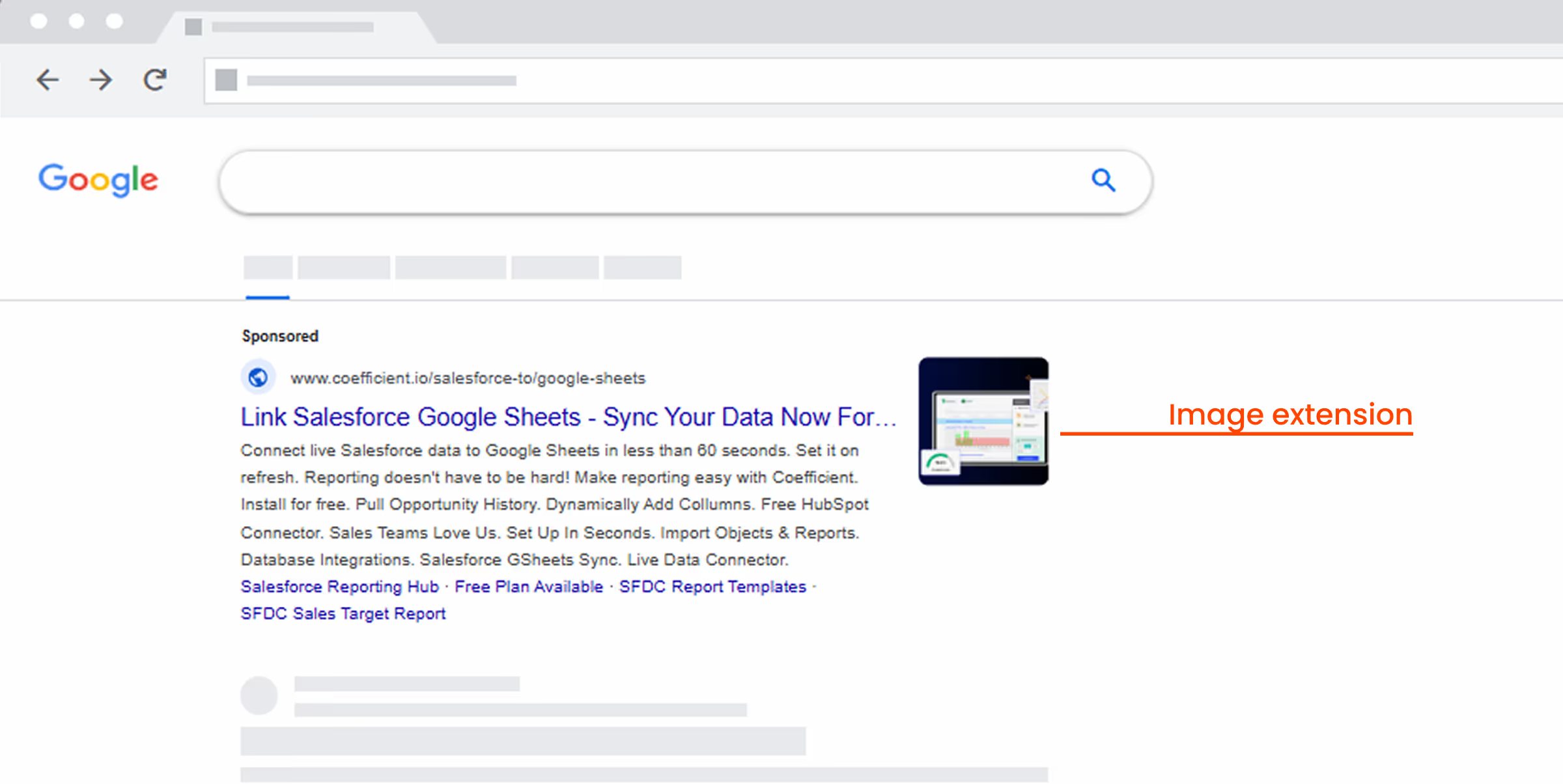
Image extensions add a small image, either square or landscape to the side of your ad. Image extensions can complement your Google ad copy with relevant visuals. Use high-quality images that align with your brand, such as screenshots of your platform.
Example: A SaaS provider could include an image of their dashboard interface to reinforce product value visually.
- Formats: JPG, PNG
- Aspect Ratios: 1:1 square, 1.91:1 landscape
- File Size: max 5120 KB
- Images: up to 20
For a step-by-step walkthrough, check out our founder Cole Furrh’s video tutorial on How to Create Google Ads Image Extensions.
Call Extensions

Call extensions add a phone number below your ads, enabling your prospects to connect directly with your sales team. This is especially useful for B2B services or high ticket B2B SaaS solutions, where direct conversations can be critical for converting leads into clients.
Ensure your team is prepared to handle inquiries and provide value during these interactions.
Ad Specs
- Phone Number: must be verified
- Numbers: 1 per extension
Lead Form Extensions

Lead form extensions allow you to capture user information directly through the ad, making it easy to gather high-quality leads. For B2B services, use lead form extensions to collect contact information for demo requests, webinar sign-ups, or consultation requests.
Example: A B2B SaaS provider might use a lead form extension inviting users to “Sign Up for a Free Demo,” allowing them to gather leads directly from the ad and follow up with more information or a scheduled demo.
Ad Specs
- Headline: up to 30 characters
- Business Name: up to 25 characters
- Description: up to 200 characters
- Lead Forms: 1 per campaign
For a step-by-step walkthrough, check out our founder Cole Furrh’s video tutorial on How to Create Google Ads Lead Form Extensions.
Price Extensions

Price extensions display your pricing options, helping potential customers evaluate your service at a glance. For B2B services, price extensions probably aren't useful, but B2B SaaS companies can use this feature to showcase their pricing plans. This adds transparency, builds trust and qualifies leads by preparing them for the pricing.
Example: A SaaS provider might list “Basic Plan – $99/month”, "Pro Plan - $100/Month" and “Enterprise Plan – Contact for Pricing” to give prospects an upfront idea of pricing.
Ad Specs
- Header: up to 25 characters
- Description: up to 25 characters
- Cards: up to 8 with clickable URLs
App Extensions

App extensions allow you to promote app downloads or app usage directly from the ad. These can be set up for the Google Play Store or the Apple App Store. If your product has a mobile app, this is a great way to encourage downloads.
Ad Specs
- Destination: Google Play or Apple App Store
- Requirement: app ID
Location Extensions

Location extensions are useful for businesses with physical offices or event spaces, allowing users to easily find or contact you. This isn't going to be as important for B2B SaaS, but some services may have physical locations, like logistics or warehousing services.
Ad Specs
- Destination: verified Google Business Profile
- Display: address, map pin, or distance
Conclusion: Ready to Boost Your Google Ads Performance?
Creating high-converting Google Ads copy requires a lot of work. As you can see, there are dozens of different types of Google Ad Copy and each headline, description or extension can be utilized to help you reach your audience more effectively.
B2B ad campaigns in particular often have to hit on complex value propositions with limited ad copy, so it's vital that you understand how to utilize each type of ad copy field effectively to ensure your ads are hitting on the right value propositions and pain points.
Hopefully this article will help you leverage ad copy more effectively for your brand.
If you would like to hear how we'd write ad copy for your brand you can click this link to Book a Free Ad Strategy Consultation!
FAQs
Template question
Template text answer

